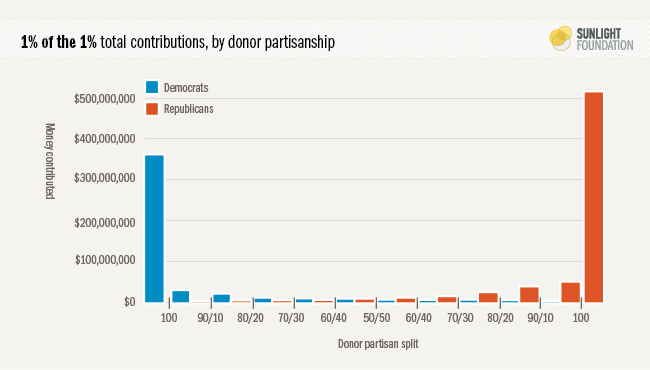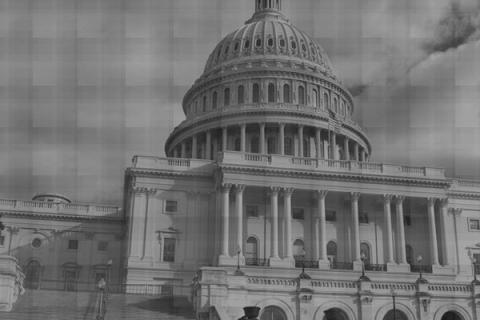
A study by the Sunlight Foundation titled "The 1% of the 1%" released on Wednesday. It analyzed political donations from the top 31,385 donors to the House of Representatives during the last election cycle. A startling picture of how political fundraising breeds partisan decision making is included in the findings.
The above graph illustrates how donors on the ends of the political spectrum are more likely to contribute significantly more than moderate voters. Thus, the more polarizing donors act as a filter between candidates and the larger population, shaping the 'agenda' of issues and legislation that is discussed, as well as their voting habits.
"For both parties, the more extreme the candidate, the more they depend on small donations (under $200)," the study found.
There is also a statistically significant correlation between dependence on large donors and more conservative House Republicans, and a slight moderating effect on House Democrats, though not statistically significant. For House Republicans, both large and small donors lead them farther right, when measured against the Nominal Three-Step Estimation method, which gauges partisanship.
This phenomenon does not stop with candidates, parties are going to the same donors to fund their committees. Likewise, an increasing percentage of committee funds is coming from the top '1 percent of 1 percent.'
"In 2012, the National Republican Senatorial Committee raised more than half (54.2 percent) of its $105.8 million from the 1% of the 1%, and the National Republican Congressional Committee raised one third (33.0 percent) of its $140.6 million from the 1% of the 1%... The Democratic Senatorial Campaign Committee raised 12.9 percent of its $128.9 million from these top donors, and the Democratic Congressional Committee raised 20.1 percent of its $143.9 million from 1% of the 1% donors."
So what remedies are available to help reduce the polarizing impact of political fundraising? 'Safe' districts, where competitive elections are rare, breed more partisan candidates. One conclusion of the study was, "A safer seat is associated with more extremist voting patterns in both parties. Going from a margin of victory of just a few votes to winning all of the votes predicts a shift of 17.3 points to the extremist end of the scale for Democrats, and a shift of 8.8 points to the extremist end of the scale for Republicans."
By increasing the number of competitive districts, even with the inherent nature of political fundraising, 'extreme' politicians will be less prevalent. Representatives can't afford more extreme positions in competitive districts. Although fundraising will always be a part of the political process, more competitive elections can mitigate its inherently polarizing consequences.
